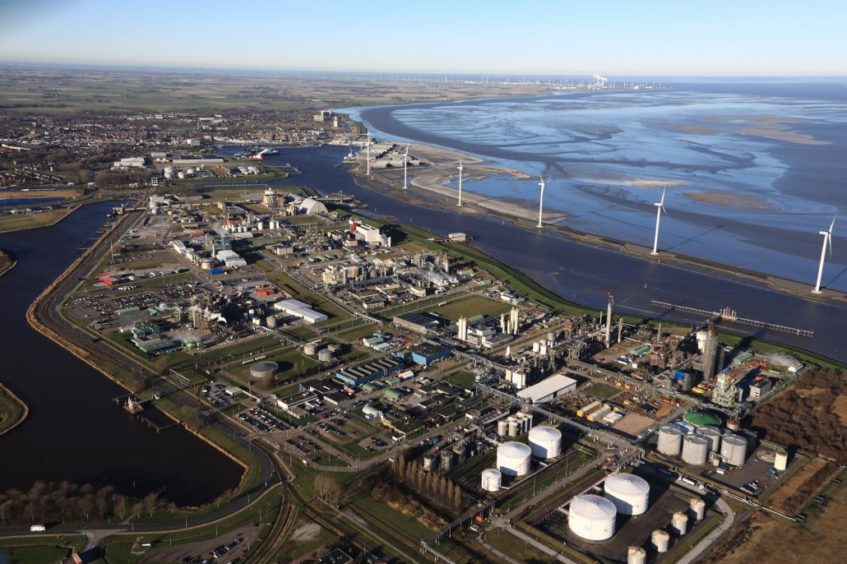
The Netherlands wants to become a leader in green hydrogen production, but projects will require subsidies and more private investors to get off the ground.
With the giant Groningen field expected to cease production around 2022, green hydrogen could fill some of the Netherlands’ supply gap in the future and help keep the country’s dependency on gas imports – mostly from Norway and Russia – in check.
The Dutch government this week launched a strategy paper which outlined the potential for green hydrogen production in the country. Green hydrogen is effectively electricity produced by renewable sources such as offshore wind and converted into gas using electrolysers.
The paper recognised that the development of green hydrogen is currently far more expensive than other hydrogen technologies, for example compared with blue hydrogen which uses carbon capture technologies for CO2 abatement. Costs will come down significantly as projects are scaled up, but national subsidies will still be necessary to fill the cost gap. To this end, the Dutch government plans to allocate €35 million/year from 2021 to scale up projects. Support may also come from EU funds such as the Connecting Europe Facility. Moreover, the European Commission has said it will launch a proposal for a European Hydrogen Alliance later this year, in a move to shore up investor confidence and speed up projects across Europe.
Groningen project
One of the key projects to watch in the Netherlands is the NortH2 green hydrogen project in Groningen in the north of the country. The project is promoted by a consortium consisting of Dutch TSO Gasunie, Groningen Seaports and Shell and a feasibility study is expected to be completed by the end of the year. The plan is to build offshore wind farms in the North Sea that could generate around 3 to 4 GW of electricity for hydrogen production before 2030, possibly rising to 10 GW around 2040.
The project has the potential to create thousands of new jobs, however tens of billions of euros in investment will be needed to commercialise it.
“The financing structure has not yet been decided. The consortium is looking for investment partners and support partners. But the project will also need subsidies to begin with, for example from the EU and the Dutch government. This will be necessary to bring the cost down and produce hydrogen at acceptable prices. But the signals coming out of Brussels and from the Dutch government are very supportive,” Cas König, CEO at Groningen Seaports told the Energy Voice.
The technological challenges are also momentous. Green hydrogen is a nascent technology and reaching economies of scale is very different to building a demonstration project.
“Scaling up is not easy. I usually say that everybody knows how to make a cup of coffee, but making 5 liters of coffee per minute is very different. A lot of investigation and research will have to be put into the project,” König added.
Petrochemicals
Much has been said about the potential for using hydrogen to fuel long-haul transport such as trucks and trains and for power generation and heating. However, the Groningen project aims to supply the petrochemicals industry, at least in the first phase.
“We believe it is wise to use the hydrogen for making petrochemical products rather than burning it for transport. For example, it can be used to produce renewable plastics. But converting hydrogen to synthetic kerosine for aviation is also an option in the longer term,” said König.
Green hydrogen production, initially in the port of Eemshaven, possibly also offshore at a later stage, is expected to be around 800,000 tonnes per year by 2040. Most of the onshore grid infrastructure is already in place as existing pipelines operated by Gasunie can be used to ship the hydrogen to the end-users.
“The logic behind the project is that we have a lot of available space in the North Sea, at our ports and in our grids. The pipeline network currently used to transport low calorific gas (L-gas) can be used to transport hydrogen when the Groningen field stops producing. And the salt caverns used to store conventional gas can store hydrogen too. The H-gas network is separate from the L-gas network so it can continue transit gas from Norway and Russia also in the future,” said König.
Other power-to-gas projects in the Netherlands include the North Sea Wind Power Hub, which is promoted by Dutch TSO TenneT, Denmark’s Energinet, Gasunie and the Port of Rotterdam. The project could become operational in the 2030s, but – like the Groningen project – it has huge financial and technological barriers to overcome.
Recommended for you
